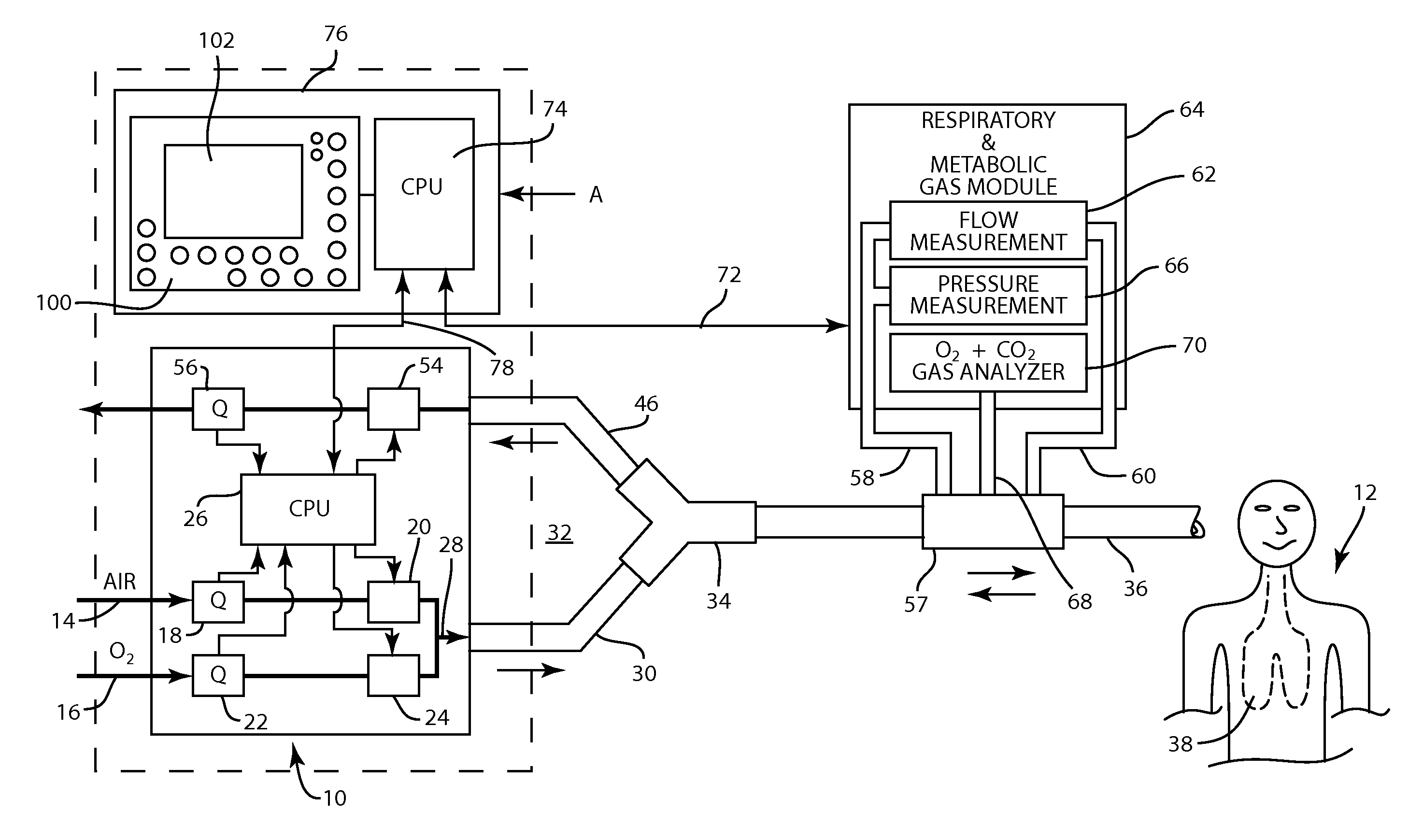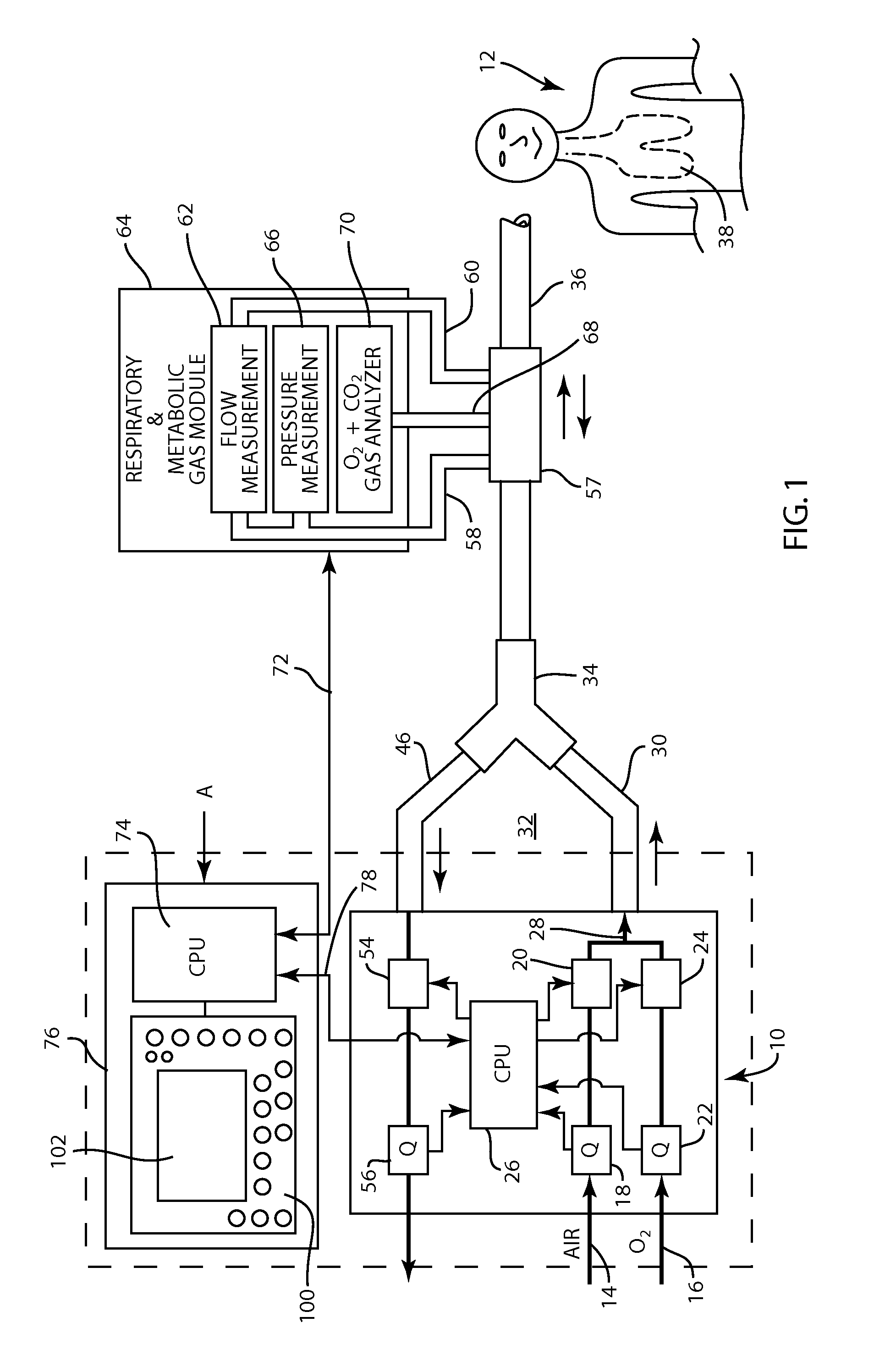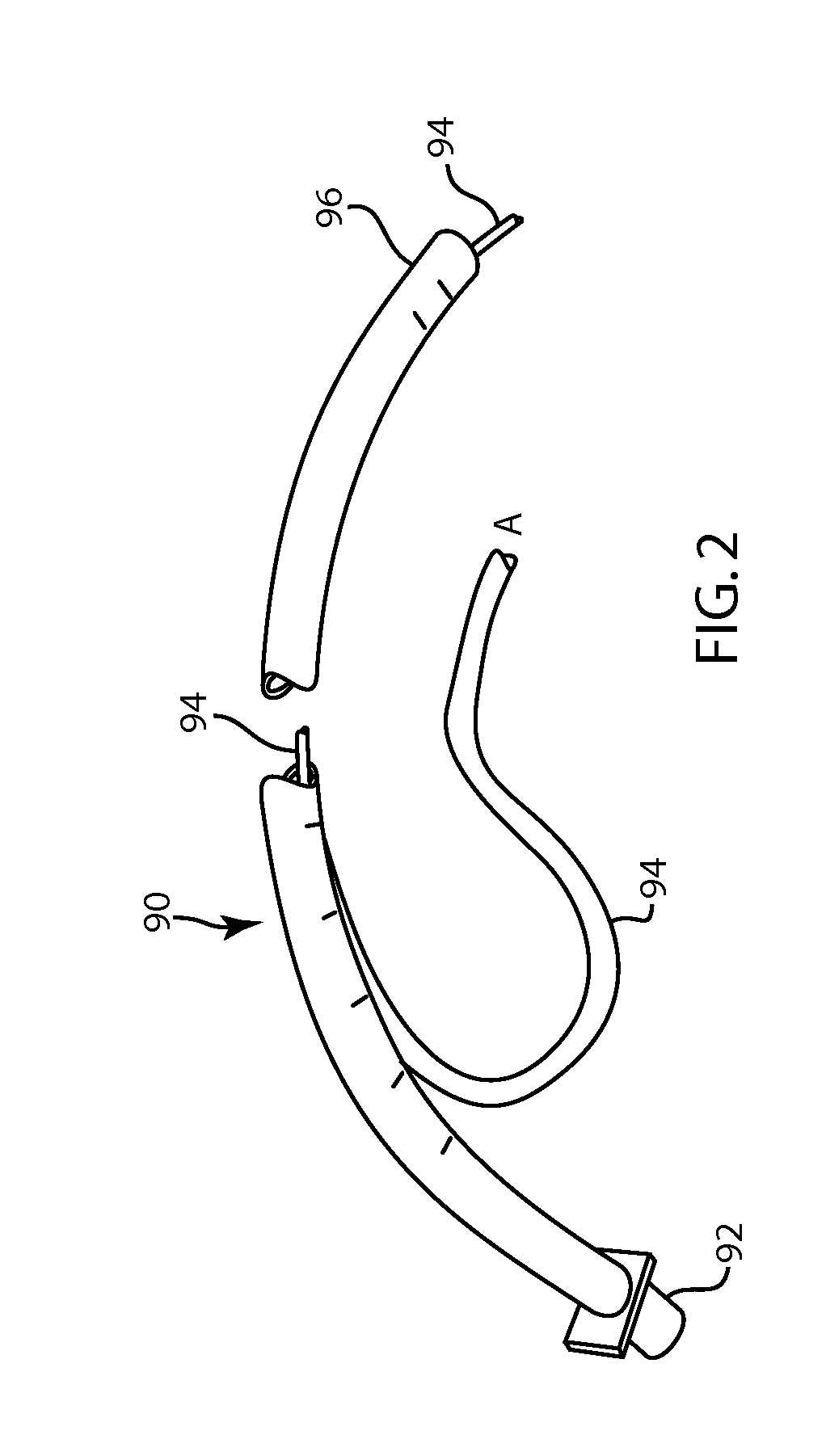Apparatus and Method for Identifying FRC and PEEP Characteristics
a technology applied in the field of facial features and facial features, can solve the problems of excessive lung distension, inability or inadvisable to move the patient to a laboratory or into and out of a body box for the determination of functional residual capacity, and the seriousness of the functional residual capacity to not be breathing spontaneously, etc., to achieve the effect of increasing the functional residual capacity
- Summary
- Abstract
- Description
- Claims
- Application Information
AI Technical Summary
Benefits of technology
Problems solved by technology
Method used
Image
Examples
Embodiment Construction
The Mechanical Ventilator and Airway Gas Module
[0040]FIG. 1 shows mechanical ventilator 10 for providing breathing gases to patient 12. Ventilator 10 receives air in conduit 14 from an appropriate source, not shown, such as a cylinder of pressurized air or a hospital air supply manifold. Ventilator 10 also receives pressurized oxygen in conduit 16 also from an appropriate source, not shown, such as a cylinder or manifold. The flow of air in ventilator 10 is measured by flow sensor 18 and controlled by valve 20. The flow of oxygen is measured by flow sensor 22 and controlled by valve 24. The operation of valves 20 and 24 is established by a control device such as central processing unit 26 in the ventilator.
[0041]The air and oxygen are mixed in conduit 28 of ventilator 10 and provided to inspiratory limb 30 of breathing circuit 32. Inspiratory limb 30 is connected to one arm of Y-connector 34. Another arm of Y-connector 34 is connected to patient limb 36. During inspiration, patient ...
PUM
 Login to View More
Login to View More Abstract
Description
Claims
Application Information
 Login to View More
Login to View More - R&D
- Intellectual Property
- Life Sciences
- Materials
- Tech Scout
- Unparalleled Data Quality
- Higher Quality Content
- 60% Fewer Hallucinations
Browse by: Latest US Patents, China's latest patents, Technical Efficacy Thesaurus, Application Domain, Technology Topic, Popular Technical Reports.
© 2025 PatSnap. All rights reserved.Legal|Privacy policy|Modern Slavery Act Transparency Statement|Sitemap|About US| Contact US: help@patsnap.com



